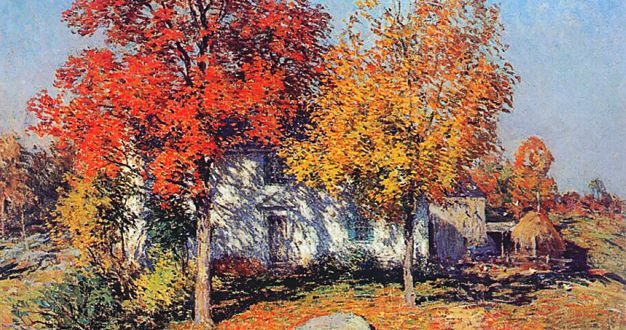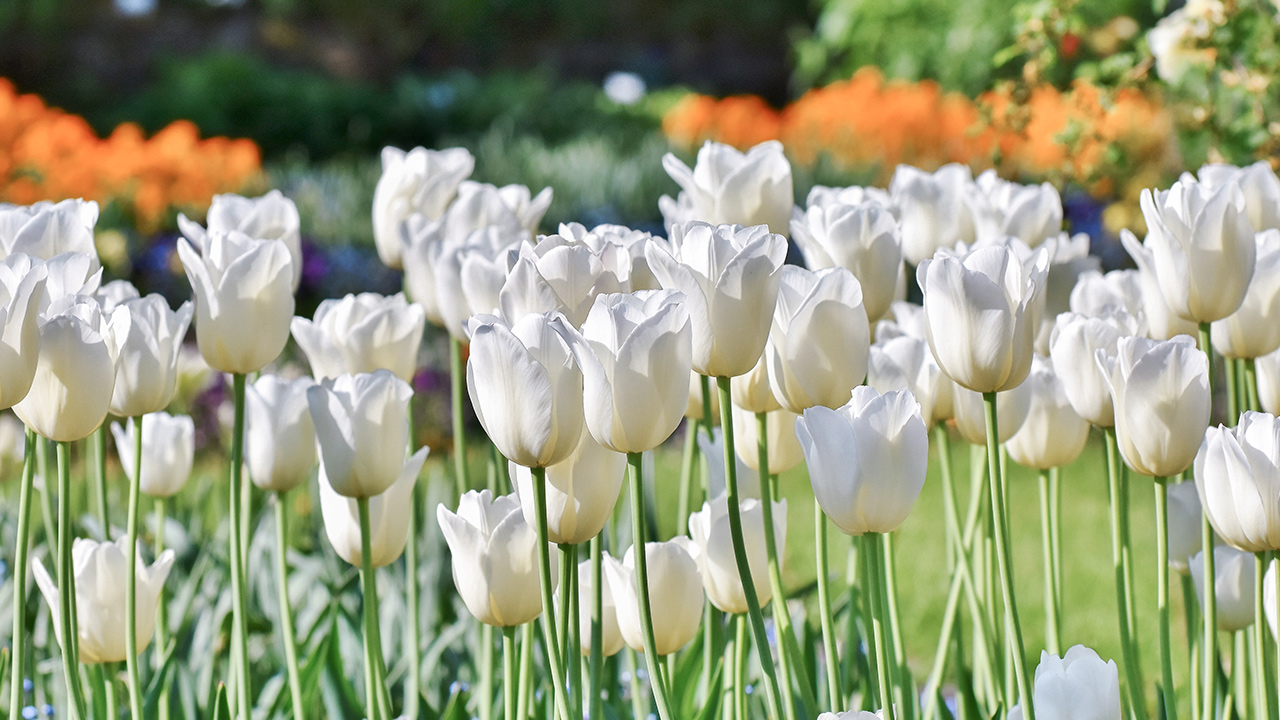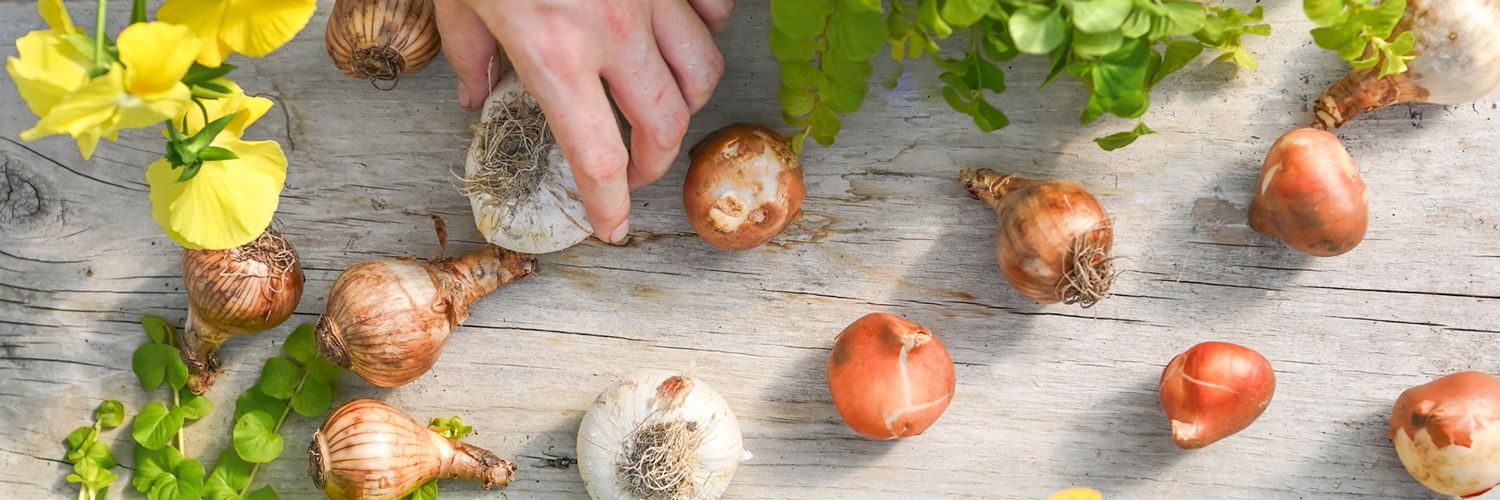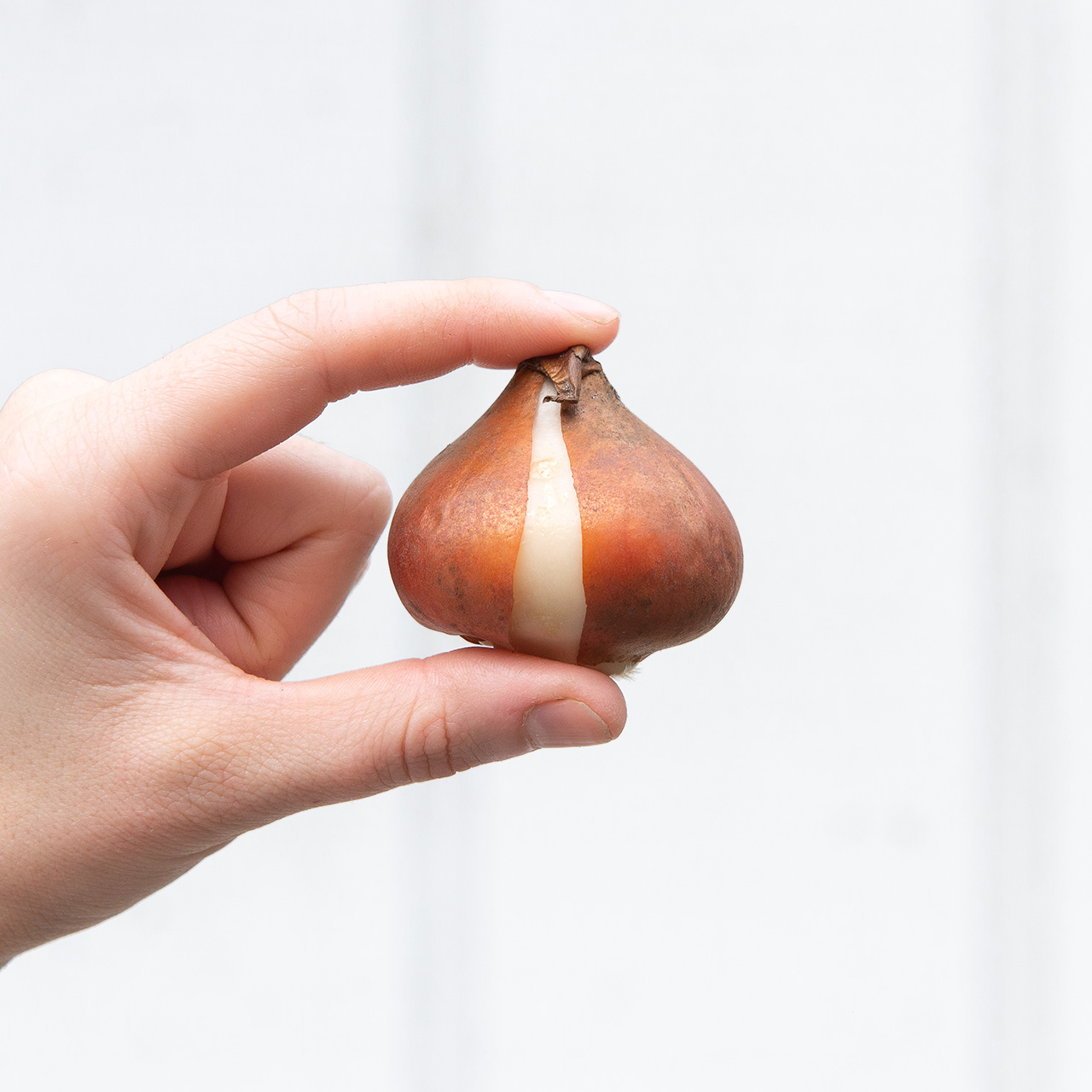
Planting tulips, daffodils, and other flowering bulbs is an ideal kind of gardening. Their planting and care couldn’t be easier. And the rewards are great: a cheerful display of spring color to drive away the dreary winter. Whether you’re new to gardening, ready to extend the season of your spring display, or just looking for something special to add to your garden, everyone can enjoy success with flowering bulbs. It all starts with planting in the fall, and here, we share a few tips to help you get started.

This Couldn’t Be Easier
For beginning gardeners, creating a professional-looking display in your early spring landscape is as easy as grabbing a shovel and a couple dozen tulip bulbs in your favorite color. If it’s your first experience with bulb gardening, keep it simple. Large groupings of a single color and bulb variety make a bold statement and really tie a landscape together when the groups are repeated throughout your space. These early-spring beauties appear long before your other landscape plants wake up, so tuck the bulbs anywhere you want – in sweeping masses along the front of a landscape bed, in open spaces between shrubs and perennials, around mailboxes and trees. Just check the package for the recommended planting depth, dig a wide hole, and scatter the bulbs. If they land roots-down, that’s ideal – but if a few end up on their sides, that’s ok too. Then, cover them up, water them in, and wait for them to pop up in the spring.

Start Having Fun
If you’re feeling a little more daring, start exploring more complex designs in your bulb garden. Fall bulbs offer an exciting range of textures, colors, heights, and bloom times with choices including daffodils, hyacinths, dwarf iris, crocus, and more. If you’re using multiple colors of one type of flower – like tulips – try planting separate colors in groups for a cleaner look. Or randomly mix the bulbs for something less formal.
When planting mixed combinations of fall bulb varieties, be sure to check their packages for information on planting depth, height, and bloom time. To keep the color coming from March all the way into June, mix early-spring bloomers – like crocus and snowdrops – with mid- to late-season varieties – like tulip, fritillaria, iris, and allium. And if your bulbs bloom at different heights, plan to place the tallest-blooming bulbs toward the back of the bed so they don’t hide shorter blooms in the front.

Find Something Special
The classic smooth-sided tulip or golden-yellow daffodil are important components in any beautiful bulb garden. But, if you’re looking for new textures, colors, and even patterns in your spring blooms, fall bulbs can provide that too. In our collection, you’ll find a yellow and red variegated tulip called Flaming Parrot with fringed petals resembling a parrot’s plumage. One of our alliums blooms white and airy like a giant dandelion puff. Another looks like an exploding firework, and still another grows five feet tall. Fritillaria offer a strange and varied array of heights, colors, and textures too, including one with a distinct checkerboard pattern on its delicate, downturned petals.
And for a bulb garden with a special kind of ‘wow’ factor, consider our heirloom varieties. These are the bulbs your grandmother may have planted – or even her grandmother, or possibly her grandmother before that. Dating from as far back as the 1500’s, heirloom bulb varieties often retain the fragrance, disease-resistance, and natural forms that existed before hybridization became common. (It’s also fun to watch someone’s chin drop when you say your daffodil originated in 1601.)
Learn a Few Tips for Success
Planting bulbs is easy, but there are a couple of important things to remember. For the best selection, pick your bulbs now, but you’ll want to wait to plant until we’ve reached true fall weather with 50°F soil temperatures. Until then, store your bulbs in a cool, dry spot while you wait. Bulbs do best in well-draining soil, so if your bed needs some help, incorporate compost into the soil before planting. As a general rule, plant to a depth about 3 times the height of the bulb – but check the packaging of each variety to be sure. Water well when you plant and then weekly until the ground freezes. And as an extra measure, you can follow-up at that point with a thick layer of organic mulch to insulate the soil.
Plan Now for a Colorful Spring
Take a walk through our bulb market and find out just how beautiful and easy growing a bulb garden can be. If you have questions, just ask. We’re always here to help.



